
 |
Ready to Run Coaches |
|
The first batch in LBSC Mahogony livery was produced in China, future liveries are being produced at Dapol's factory in Chirk. The first of which was the Southern lined green, electrically lit with all of the associated underframe detail. The first batch of the Southern green have now sold out but Dapol have announced a second production run of the green livery which will become available in September or October. They have also announced the LBSC lined brown livery, ideal to go with the Improved Engine Green and Marsh Brown liveried Dapol Terriers which should become available in the summer. We are taking advance orders for both the re-run of the Southern green and the LBSC brown liveries now. These coaches will all have the short buffers and coupling as per the LBSC livery also with the prototypical longer buffers on the brake compartment of the the brake thirds. Details of these is shown below |
LBSCR / SR 4 Wheel CoachesThe LB&SCR built a large number of 4 wheel coaches formed into close coupled sets for suburban service with the Stroudley A1 class 0-6-0T Terrier engines. First, composite, second, third and brake third coaches were built all using a standard 26 feet length, 8 feet width size body constructed in mahogany on teak framing mounted on a 15 feet wheelbase chassis. Initially the only brakes available were the guards' hand brakes and lighting was by oil lamps. Later all coaches were equipped with continuous Westinghouse air brakes worked from the locomotive and gas lighting was provides, while from 1881 some sets were fitted with electric lighting. These carriages were constructed between 1870 and 1890 totalling more than 1,500 for local and main line sets. The sets consisted of between eight and eleven coaches each 26ft long on a 15ft wheelbase and were originally close coupled with a bar but later some modified main line coaches were fitted with short buffers and amalgamated into the suburban sets, only the brake ends had long buffers. Braking initially was only available through the guards hand brake, but later all coaches were fitted with Westinghouse air brakes. Lighting was originally by oil lamps, however many coaches were later converted to gas lighting, and from 1881 some sets were fitted with electric lighting with a dynamo in the brake coach. The oil lit varnished mahogany liveried coaches in the first production run as listed here. Later on Dapol will be offering different liveries, and details including gas and electric lighting and Westinghouse brakes. As a minimum a modeller will require one of the All third Brakes to operate a train of these coaches. On the suburban range of these coaches the interconnection between coaches will be provided by a prototypical draw bar, only the outer most end of the brake will be fitted with a standard coupling to connect the coaches to the locomotive. Main line versions of the coach will be fitted with standard three link couplings and short buffers at both ends of each coach. All Brake 3rd coaches will have the prototypical longer buffers at the brake end of the coach. Features: The specifications for the coaches include::
|
|
Ref. |
Description and location |
RRP |
Our Price |
|
|
Lined Brown Brake Third #891 | £127.02 |
£108.00 |
|
|
Lined Brown Brake Third #891 - fitted with light bar | £155.89 |
£132.50 |
|
| Lined Brown Brake Third #891 - DCC and light bar fitted | £190.53 |
£161.95 |
|
|
Lined Brown Brake Third #892 | £127.02 |
£108.00 |
|
|
Lined Brown Brake Third #892 - fitted with light bar | £155.89 |
£132.50 |
|
| Lined Brown Brake Third #892 - DCC and light bar fitted | £190.53 |
£161.95 |
|
|
Lined Brown Third #992 | £127.02 |
£108.00 |
|
|
Lined Brown Third #992 - fitted with light bar | £155.89 |
£132.50 |
|
| Lined BrownThird #992 - DCC and light bar fitted | £190.53 |
£161.95 |
|
|
Lined Brown composite #400 | £127.02 |
£108.00 |
|
|
Lined Brown composite #400 - fitted with light bar | £155.89 |
£132.50 |
|
| Lined Brown composite #400 - DCC and light bar fitted | £190.53 |
£161.95 |
SR 4 wheel Stroudley coaches- electrical lit |
Ref. |
Description and location |
RRP |
Our Price |
|
|
Southern Lined Green Third #3674 | £127.02 |
£108.00 |
|
|
Southern Lined Green Third #3674 - fitted with light bar | £150.91 |
£132.50 |
|
| Southern Lined Green Third #3674 - DCC and light bar fitted | £184.43 |
£161.95 |
|
|
Southern Lined Green Brake Third #3686 | £127.02 |
£108.00 |
|
|
Southern Lined Green Third #3686 - fitted with light bar | £150.91 |
£132.50 |
|
| Southern Lined Green Third #3686 - DCC and light bar fitted | £184.43 |
£161.95 |
|
|
Southern Lined Green Third #1793 | £127.02 |
£108.00 |
|
|
Southern Lined Green Third #1793 - fitted with light bar | £150.91 |
£132.50 |
|
| Southern Lined Green Third #1793 - DCC and light bar fitted | £184.43 |
£161.95 |
|
|
Southern Lined Green composite #5799 | £127.02 |
£108.00 |
|
|
Southern Lined Green composite #5799 - fitted with light bar | £150.91 |
£132.50 |
|
| Southern Lined Green composite #5799 - DCC and light bar fitted | £184.43 |
£161.95 |
Stroudley LBSCR / SR 4 wheel suburban oil lit coaches |
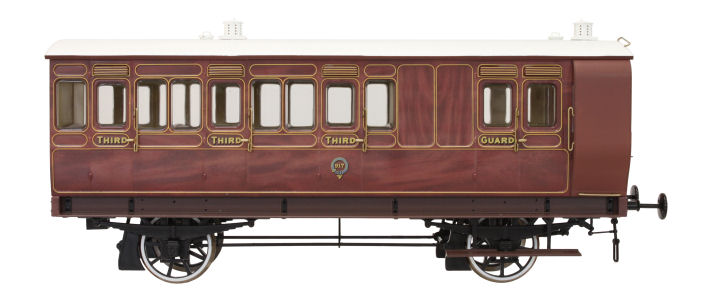
LBSC 4 wheel Suburban Brake Third - oil lit |
Ref. |
Description and location |
RRP |
Our Price |
|
|
LBSC Mahogany Brake Third #917 | £127.02 |
£108.00 |
|
|
LBSC Mahogany Brake Third #917 - fitted with light bar | £155.89 |
£132.50 |
|
|
LBSC Mahogany Brake Third #917 - DCC and light bar fitted | £190.53 |
£161.95 | |
|
LBSC Mahogany Brake Third #918 | £127.02 |
£108.00 |
|
|
LBSC Mahogany Brake Third #918 - fitted with light bar | £155.89 |
£132.50 |
|
|
LBSC Mahogany Brake Third #918 - DCC and light bar fitted | £190.53 |
£161.95 |
LBSC 4 wheel Suburban Third - oil lit |
Ref. |
Description and location |
RRP |
Our Price |
|
|
LBSC Mahogany Third #861 | £127.02 |
£108.00 |
|
|
LBSC Mahogany Third #861 - fitted with light bar | £155.89 |
£132.50 |
|
|
LBSC Mahogany Third #861 - DCC and light bar fitted | £190.53 |
£161.95 |
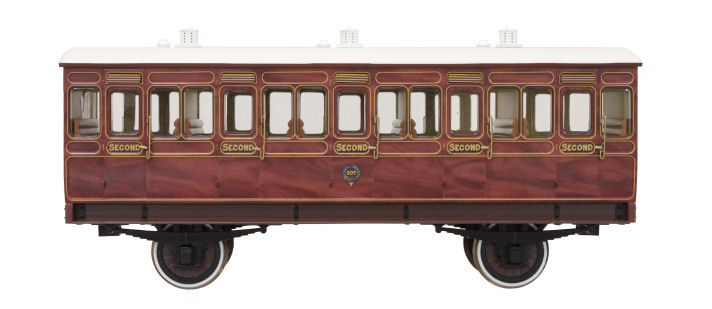
LBSC 4 wheel Suburban Second - oil lit |
Ref. |
Description and location |
RRP |
Our Price |
|
|
LBSC Mahogany Second #507 | £127.02 |
£108.00 |
|
|
LBSC Mahogany Second #507 - fitted with light bar | £155.89 |
£132.50 |
|
|
LBSC Mahogany Second #507 - DCC and light bar fitted | £190.53 |
£161.95 |
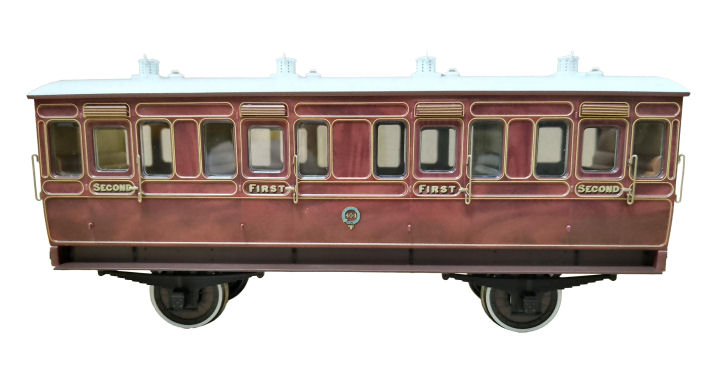
LBSC 4 wheel Suburban Composite - oil lit |
Ref. |
Description and location |
RRP |
Our Price |
|
|
LBSC Mahogany Composite #404 | £127.02 |
£108.00 |
|
|
LBSC Mahogany Composite #404 - fitted with light bar | £155.89 |
£132.50 |
|
|
LBSC Mahogany Composte #404 - DCC and light bar fitted | £190.53 |
£161.95 |
LBSC 4 wheel Suburban First - oil lit |
Ref. |
Description and location |
RRP |
Our Price |
|
|
LBSC Mahogany First Class #707 | £127.02 |
£108.00 |
|
|
LBSC Mahogany First Class #707 - fitted with light bar | £155.89 |
£132.50 |
|
|
LBSC Mahogany First Class #707 - DCC and light bar fitted | £190.53 |
£161.95 |
Test Sample images of the mainline version of the Brake Third coach with Gas lit fittings.
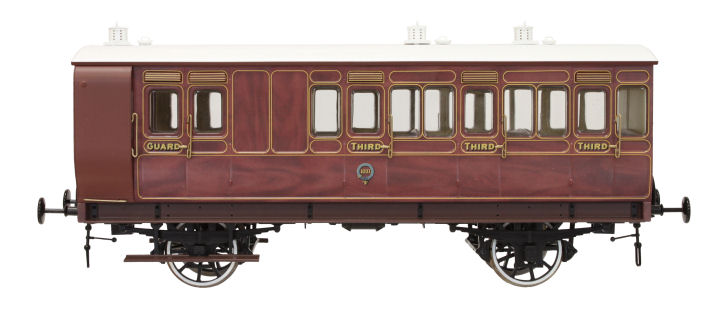
LBSC 4 wheel Mainline Brake Third - oil lit |
Ref. |
Description and location |
RRP |
Our Price |
|
|
LBSC Mahogany Brake Third #1031 | £127.02 |
£108.00 |
|
|
LBSC Mahogany Brake Third #1031 - fitted with light bar | £155.89 |
£132.50 |
|
|
LBSC Mahogany Brake Third #1031 - DCC and light bar fitted | £190.53 |
£161.95 |
|
|
LBSC Mahogany Brake Third #1032 | £127.02 |
£108.00 |
|
|
LBSC Mahogany Brake Third #1032 - fitted with light bar | £155.89 |
£132.50 |
|
|
LBSC Mahogany Brake Third #1032 - DCC and light bar fitted | £190.53 |
£161.95 |
Test sample images of the mainline version of the All Third coach with Gas lit fittings.
LBSC 4 wheel Mainline Third - oil lit |
Ref. |
Description and location |
RRP |
Our Price |
|
|
LBSC Mahogany Third #811 | £127.02 |
£108.00 |
|
|
LBSC Mahogany Third #811 - fitted with light bar | £155.89 |
£132.50 |
|
|
LBSC Mahogany Third #811 - DCC and light bar fitted | £190.53 |
£161.95 |
Test sample images of the mainline version of the Composite coach with Gas lit fittings.
LBSC 4 wheel Mainline Composite - oil lit |
Ref. |
Description and location |
RRP |
Our Price |
|
|
LBSC Mahogany Composite #301 | £127.02 |
£108.00 |
|
|
LBSC Mahogany Composite #301 - fitted with light bar | £155.89 |
£132.50 |
|
|
LBSC Mahogany Composte #301 - DCC and light bar fitted | £190.53 |
£161.95 |
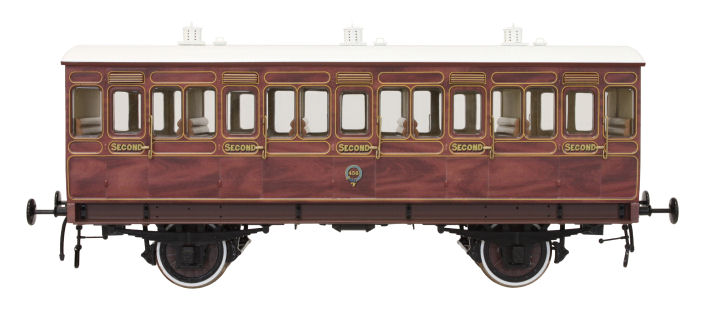
LBSC 4 wheel Mainline Second - oil lit |
Ref. |
Description and location |
RRP |
Our Price |
|
|
LBSC Mahogany Second Class #456 | £127.02 |
£108.00 |
|
|
LBSC Mahogany Second Class #456 - fitted with light bar | £155.89 |
£132.50 |
|
|
LBSC Mahogany Second Class #456 - DCC and light bar fitted | £190.53 |
£161.95 |